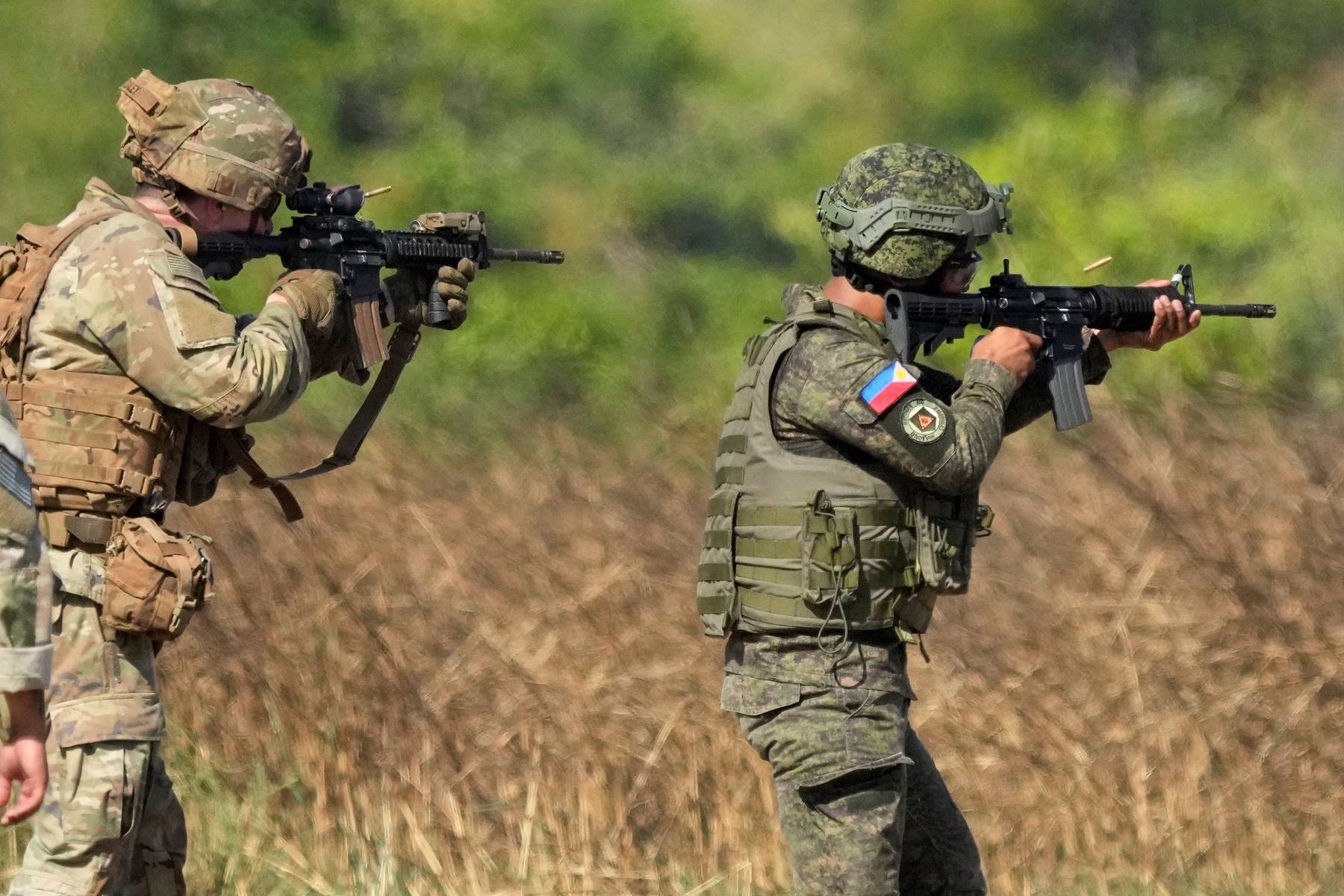
The world of military and warfare is filled with fascinating stories, heroic acts, and remarkable feats. From ancient battles to modern warfare, there are countless intriguing facts that shed light on the history, strategies, and technological advancements of the military. In this article, we will explore 20 interesting military facts that will leave you in awe. These facts range from historical moments that shaped nations to astonishing records and achievements. Whether you are a history buff, a military enthusiast, or simply curious about the great lengths humans have gone to protect their countries, these facts are sure to captivate your attention. So, buckle up and get ready to delve into the world of military history and discover some mind-blowing facts that you may not have known before.
Key Takeaways:
- The United States has the largest military budget, spending over $700 billion, and the oldest active-duty fighting force, the United States Army, dating back over 245 years.
- The military has a rich history, from using ancient languages as unbreakable codes to the first and only use of nuclear weapons in warfare, showcasing dedication, sacrifice, and innovation.
The United States has the largest military budget in the world.
With an estimated budget of over $700 billion, the United States spends more on defense than any other country in the world.
The United States Army is the oldest active-duty fighting force.
Established on June 14, 1775, the United States Army has a rich history dating back over 245 years.
The longest recorded sniper kill in history was made by a Canadian soldier.
In 2002, Canadian sniper Master Corporal Rob Furlong made a remarkable shot from a distance of 2,430 meters (2,657 yards) during Operation Anaconda in Afghanistan.
The Pentagon, the headquarters of the United States Department of Defense, has over 17 miles of corridors.
Spanning a total of 6.5 million square feet, the Pentagon is not only the largest office building in the world, but it also holds the record for the longest corridor length.
The youngest soldier to ever receive the Medal of Honor was just 11 years old.
During the Civil War, Union Army drummer boy Willie Johnston was awarded the Medal of Honor for his bravery in a battle at the age of 11.
The military salute originated as a gesture of trust.
It is believed that during medieval times, knights would raise the visors on their helmets to show friendly intentions, indicating they meant no harm.
The United States Air Force operates its own military space program.
The Air Force Space Command (AFSPC) is responsible for space surveillance, satellite operations, and protecting vital American space assets.
The atomic bombings of Hiroshima and Nagasaki in World War II were the first and only use of nuclear weapons in warfare.
These devastating bombings led to Japan’s surrender and the end of World War II.
The United States Marine Corps is a component of the United States Department of the Navy.
While the Marine Corps operates as a separate branch, it falls under the authority of the Navy during times of war.
The Military Working Dog Teams National Monument is located at Lackland Air Force Base in Texas.
This monument pays tribute to the brave dogs and handlers who served in the United States military.
The First Gulf War saw the use of stealth technology for the first time.
The F-117 Nighthawk, a stealth ground-attack aircraft, made its combat debut during Operation Desert Storm in 1991.
The ancient city of Troy, famous for the Trojan War, was discovered by a German archaeologist named Heinrich Schliemann.
Through his extensive excavations, Schliemann uncovered the remains of the legendary city mentioned in Homer’s Iliad.
The United States Army has a museum dedicated to the history of camouflage.
The United States Army Center of Military History operates the US Army Camouflage Improvement Evaluation Museum, showcasing the development and use of camouflage throughout the years.
The Medal of Honor, the highest military decoration, was first established during the American Civil War.
It is awarded to members of the United States armed forces who have displayed acts of valor above and beyond the call of duty.
The song “Taps” is played at military funerals to symbolize the end of the day.
This haunting melody is also used to honor fallen service members, as a final farewell.
The United States Navy SEALs are known for their physically demanding and rigorous selection process.
Only a small percentage of candidates who attempt to become Navy SEALs successfully complete the intense training program known as Basic Underwater Demolition/SEAL (BUD/S) training.
The camouflage pattern known as “dazzle camouflage” was used on ships during World War I.
The bold and unconventional patterns were intended to confuse enemy vessels about a ship’s speed and direction.
The Code Talkers played a crucial role in World War II by using their native languages as unbreakable codes.
Navajo, Comanche, Choctaw, and other Native American languages were utilized to transmit secret messages, baffling the enemy’s attempts at decryption.
The Royal Gurkha Rifles, a regiment of the British Army, has a long-standing reputation for bravery and loyalty.
Recruited from Nepal, Gurkha soldiers have served in conflicts worldwide, earning numerous awards for their bravery in battle.
The military uses a standardized phonetic alphabet called the NATO phonetic alphabet.
Using words such as “Alpha,” “Bravo,” and “Charlie,” this system ensures clear communication and understanding, particularly over radio or phone transmissions.
Conclusion
In conclusion, the field of the military is filled with fascinating and intriguing facts. From technological advancements to historical triumphs, there is a wealth of knowledge to explore. These 20 interesting military facts provide a glimpse into the complexity and significance of military operations throughout history.By delving into the world of military history, we gain a deeper understanding of the sacrifices made by those in uniform to protect their countries. It is vital to appreciate the military’s contribution and recognize the incredible feats and innovations that have shaped our world.Whether it’s the evolution of weaponry or the impressive logistics behind military operations, these 20 facts shed light on the multifaceted nature of the military. By continuing to explore and learn about military history, we can gain a greater appreciation for the efforts and courage displayed by those who serve.
FAQs
Q: When was the first military organization formed?
A: The first known military organization was formed in ancient Egypt around 3100 BC.
Q: Which country has the largest military in the world?
A: The United States has the largest military in the world in terms of active military personnel.
Q: What is the significance of camouflage in the military?
A: Camouflage is essential for military operations as it helps soldiers blend into their surroundings, making it difficult for the enemy to spot them.
Q: How does military technology impact warfare?
A: Military technology plays a crucial role in modern warfare, providing advanced weaponry, surveillance systems, and communication tools that enhance the effectiveness and efficiency of military operations.
Q: What is the purpose of military strategy?
A: Military strategy involves planning and implementing tactics to achieve specific objectives, such as defending territory, defeating enemies, or maintaining peace and security.
Q: How has the role of women in the military evolved?
A: The role of women in the military has evolved significantly over the years, with increasing opportunities for women to serve in combat roles and leadership positions.
Q: What are some famous military battles in history?
A: Some famous military battles include the Battle of Waterloo, the Battle of Normandy (D-Day), and the Battle of Gettysburg, among many others.
Q: What are some unique military traditions around the world?
A: Some unique military traditions include the Changing of the Guard ceremony at Buckingham Palace, the Marine Corps Birthday Ball, and the Tomb of the Unknown Soldier ceremony.
Q: How do military operations impact civilian populations?
A: Military operations can have both positive and negative impacts on civilian populations, depending on factors such as the nature of the conflict and the measures taken to protect civilians.
Q: What is the purpose of military alliances?
A: Military alliances are formed between countries to enhance collective security, deter aggression, and promote cooperation in areas such as defense planning, intelligence sharing, and joint military exercises.
From the oldest active-duty fighting force to the youngest Medal of Honor recipient, military history brims with captivating tales. But there's more to explore! Uncover little-known facts about Spanish military hospitals, or delve into the life of Dale Dye, a true military legend. And if you're curious about the inner workings of the US military, we've got just the thing for you. Keep reading to satisfy your thirst for knowledge and broaden your understanding of the complex, fascinating world of military history.
Was this page helpful?
Our commitment to delivering trustworthy and engaging content is at the heart of what we do. Each fact on our site is contributed by real users like you, bringing a wealth of diverse insights and information. To ensure the highest standards of accuracy and reliability, our dedicated editors meticulously review each submission. This process guarantees that the facts we share are not only fascinating but also credible. Trust in our commitment to quality and authenticity as you explore and learn with us.


